From what I've seen there are a few people out there that enjoy these random bits of culture, so here's a run-up on the life of a North American high school "bandie" (this is a slang term that is often regarded as derogatory among those who don't consider themselves one.)
Some of this is specific to my experience, of course, but a good deal of it applies to other field bands as well, especially from around this area.
A field band marches on a field. A football field (American football). Like this:
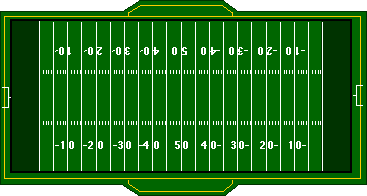
A field consists of several parts. First of all, the field is divided into two halves, separated at the 50 yard line: side A and side B. It's then further divided into thirds lengthwise, at the two "hashes" -- front and back.
In band, everyone knows what a "step" is. It's not your average step. In fact, it's only 22.5 inches long, whereas an ordinary step would run about 30 inches on average (give or take a few depending on the person). When marching down the field in a normal manner, there are 8 steps for every 5 yards. Herein lies the source of a normal step being 22.5 inches long (do the math). On a high school field, there are 28 steps between the front sideline and the front has, the front hash and the back hash, and the back hash and the back sideline. (On a university field, they have "college hash marks" which are about 3.5 steps closer to the center of the field than high school hashes.)
Here's a badly gimped version of the previous image, to illustrate the above:
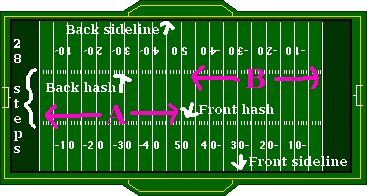
(Note: you'll get your variations on this; we've changed the names of various things several times just in the past 6 years or so. E.g. "side A" used to be "Side 1", etc.)
Of course, there's no field band that always marches at 8 steps to every 5 yards. That would be incredibly boring. When there are 8 steps to every 5 yards, we call that step size an "8 to 5" step. When there are 6 steps to every 5 yards, it's a "6 to 5" step. I'm sure it's obvious how the rest of the naming goes.
Right, now: marching. Not every band marches with the knees high on every step, pep-band style like you see in the movies such as Drumline. Syracuse University does this, but New York high schools don't. We march straight-leg style, where the point is to not have an excess of leg motion. I don't really know how to better illustrate without video.
Marching forward, it's important to roll your feet - toe to heel - and use all those leg muscles to keep yourself tall and moving smoothly, which makes it much easier to play. Marching backward, you stay completely on the balls of your feet, never touching heels to the ground. On astroturf (fake grass), if you put your heels down while marching backward, your foot is going to catch on the ground, and then you're going down.
Horns are held up at an 11-degree angle (from horizontal). Yes, 11. The mellophones in my band have the lead pipes on our horns professionally bent slightly upward, which is a great way to cheat this and make it easier. At one point the baritones were supposedly also going to get this, though I'm not sure what happened with that.
Uniform: pants, jacket, helmet, gloves. Here's me sans the gloves, which haven't come in yet from order:
Just marching is great, but how do you know where to go? This is where drill comes in. Drill is the marching part of band. Drill consists of a series of "dots"; each dot is a position on the field where you need to be at a certain time. A drill page looks like this:
(If you zoom in, I am in fact m5.)
Dragging around those hefty sets of drill while rehearsing would be pure insanity, though, so we make what's called a "dot book" - looks like this:
The numbers about inside/outside are steps. We don't really have any rules about how to make dot books; the main thing is just to make sure that all the information that will be useful to you is on the page.
Other bits: most of the time one marches shoulders flat to the front of the field, and in straight-line paths from dot to dot. There are exceptions. Also, drill instructors give terse instructions for putting horns up, down, etc. using 5-beat commands. "Dressing a line" is to make sure that you're in line with the person next to you in a block; "covering down" is making sure you're behind the person in front of you in a block.
I don't have any good overheads for this year yet, but here's last year:
I know that I have left things out, but it's not supposed to be comprehensive - and it's long enough already. Enjoy!
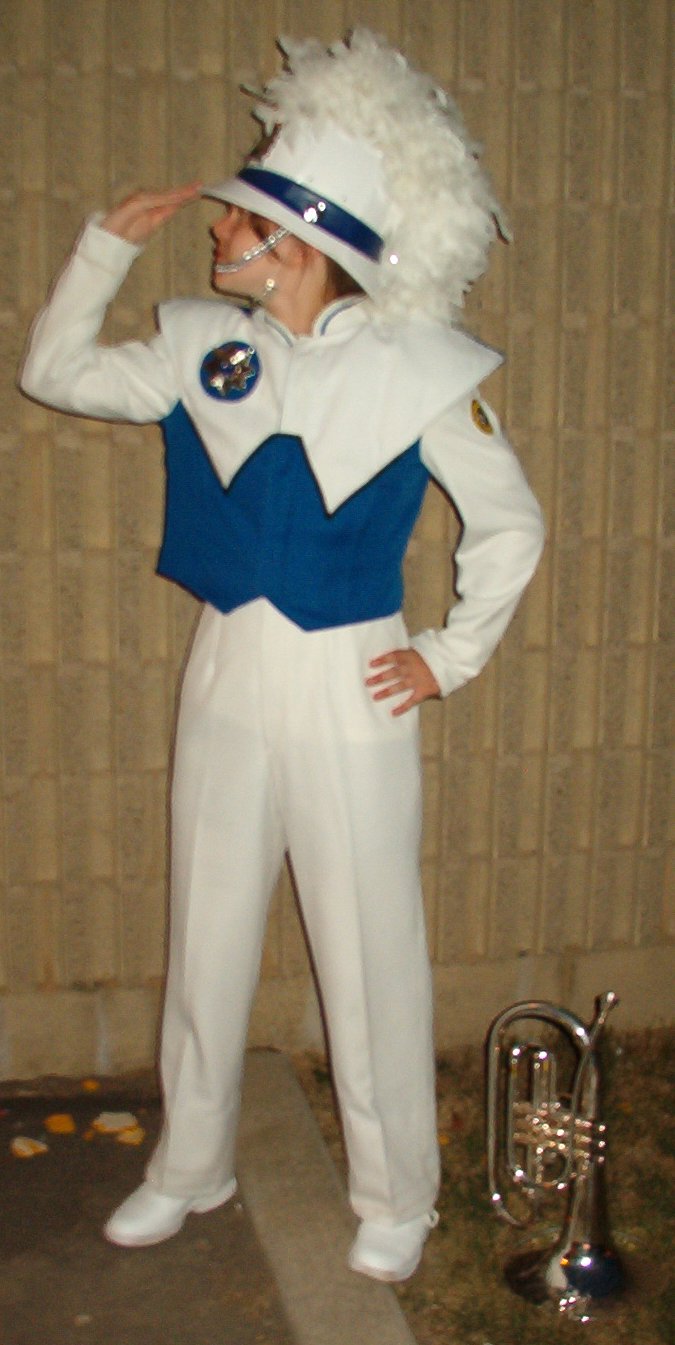
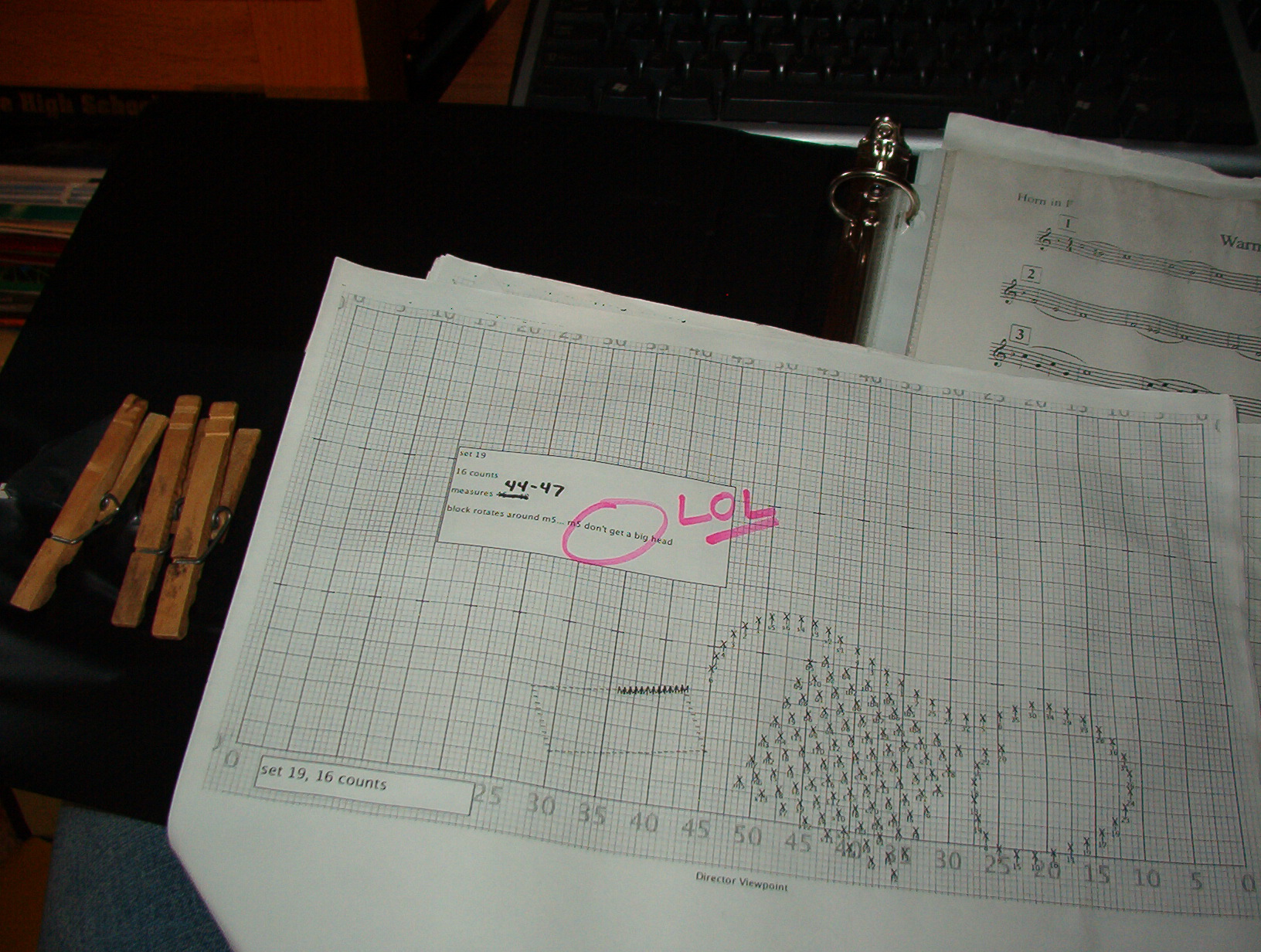
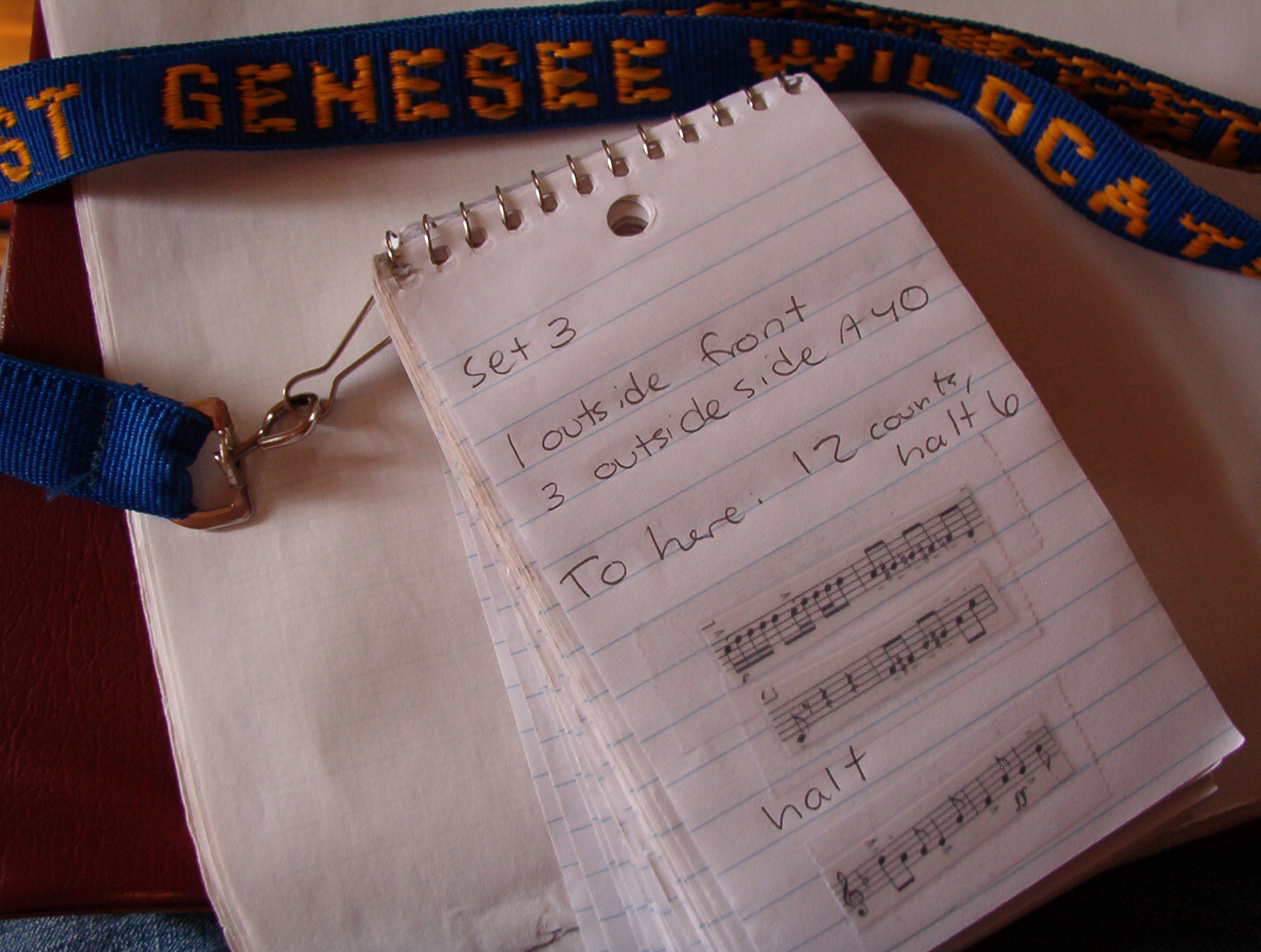
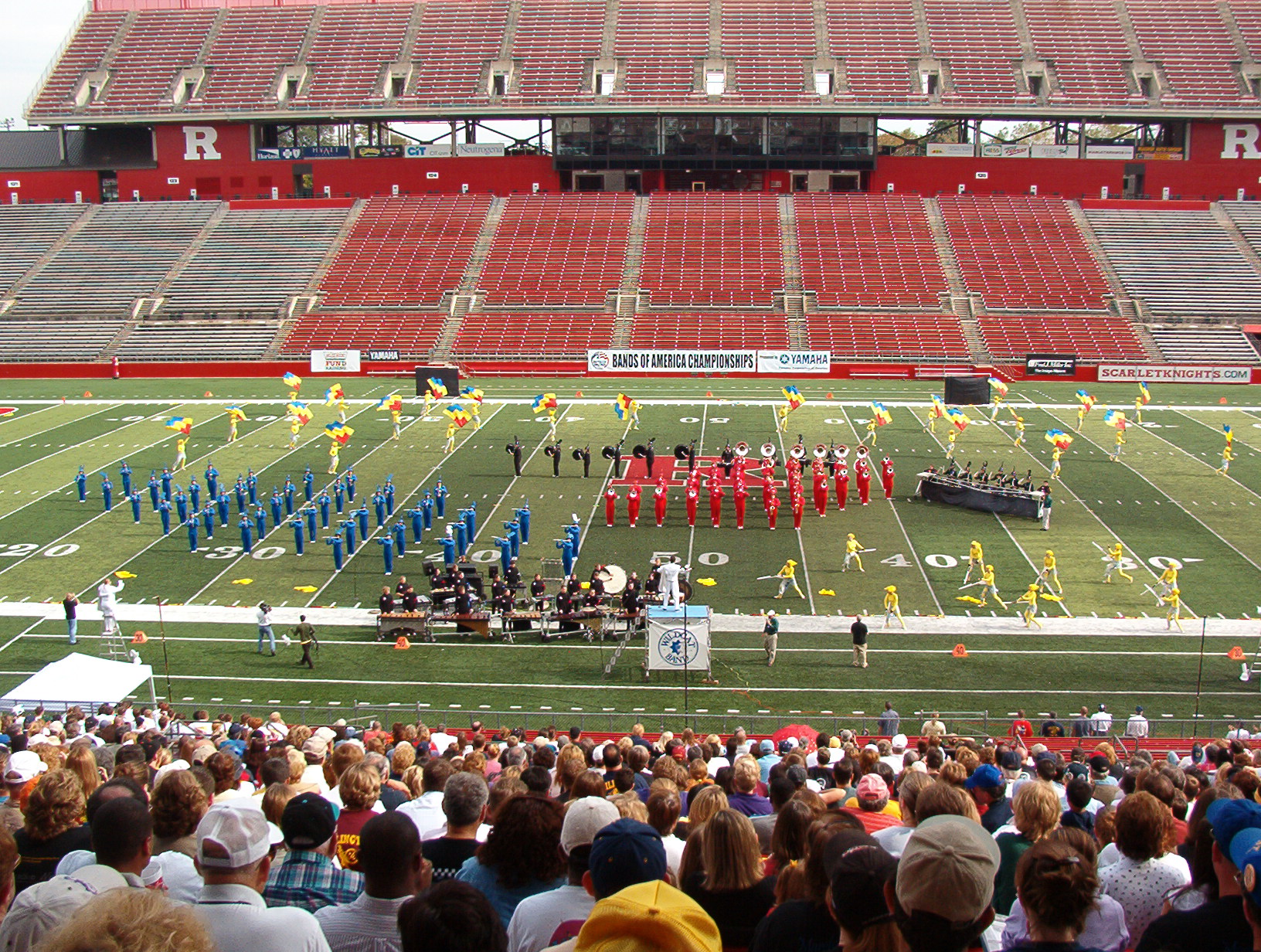
Thank you so much for posting this. I really appreciate it! I am a incoming freshman this year, and we were required to make dot books, and this really helped.
Thanks and thanks again! ~Case
I'm currently working on an ethnography of the band culture and I've been struggling to explain how these basic things work. I'll be citing this page in my bibliography... It is really really hard to explain drill in a concise, coherent manner. I also appreciate the diagram of the field! You are a wonderful wonderful person!
I'm currently working on an ethnography of the band culture and I've been struggling to explain how these basic things work. I'll be citing this page in my bibliography... It is really really hard to explain drill in a concise, coherent manner. I also appreciate the diagram of the field! You are a wonderful wonderful person!